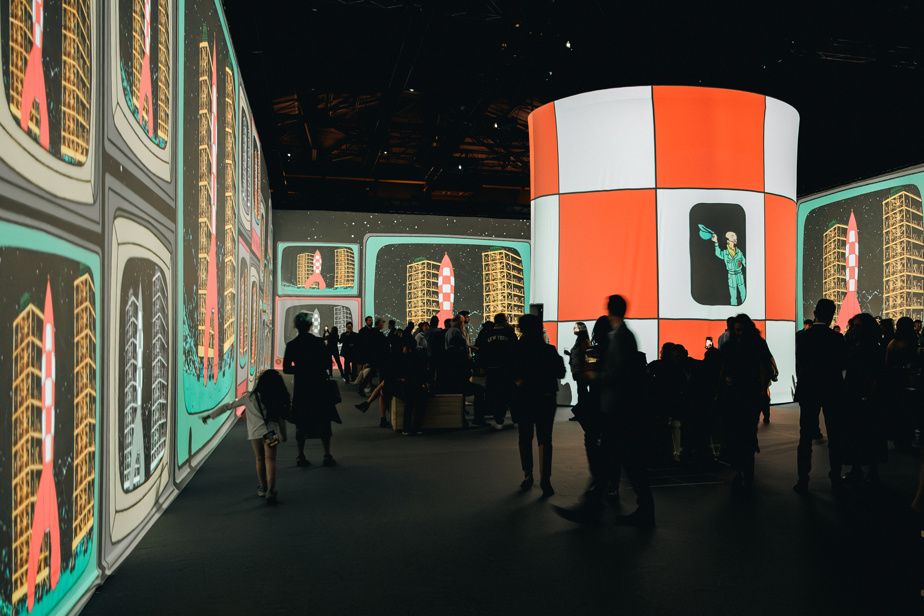Inspired by the large format projection of the works of Van Gogh, Matisse and even Picasso, European designers smelled a good deal: why not do the same with the comic book universe of Tintin? Result: a dip in Hergé’s exceptional imagery, which leads directly to a souvenir shop. Here, in a few points, is what it’s all about.
360 degree projections
The process is now familiar to you. 360-degree projections – on the four walls, the floor and a column placed in the middle of the room – this time transmit to us more than 2000 images (still and animated) taken from the 24 Tintin albums.

PHOTO WILLIAM SUDRAU, PROVIDED BY STUDIOS VIBRANT
More than 2000 images are presented in the exhibition.
Of Tintin in the Land of the Soviets (1929) until Tintin and the Picaros (1976), through Moon Objective (1953), it is the opportunity to revisit the significant scenes from the adventures of the famous puff-puffed reporter, but also the whole gallery of characters who surround him – his dog Snowy, Captain Haddock, Professor Tournesol, Castafiore… At the very end, a short extract of an interview with Hergé is broadcast (we could have used more). The experience lasts 35 minutes, then restarts.
A breakdown by theme
To sort these images, Tintinimaginatio, which owns the reproduction and adaptation rights to Hergé’s work, Culturespaces, specialized in immersive digital exhibitions, as well as Vibrant studios, from Montreal, have divided their slideshow by theme: album covers, Tintin’s great journeys, Captain Haddock’s mood swings, an overview of all the villains, chase scenes, escape scenes, etc.
Everything is accompanied by an easily recognizable soundtrack – here the Beatles (All You Need Is Love, Yellow Submarine, Day Tripper), there Jefferson Airplane (White Rabbit) or Pink Floyd (Brain Damage) and David Bowie (Heroes/Helden).
Two other rooms
As a preamble – before entering the main projection room – the visitor has the opportunity to visit two rooms. The first presents us with a very summary life story of Hergé (Georges Remi, his real name). From his birth in Brussels in 1907 until the creation of his famous character in 1929 in the Little Twentieththen his frenetic output over three decades, between 1930 and 1960, until his death in 1983. All album covers are also displayed.

PHOTO WILLIAM SUDRAU, PROVIDED BY STUDIOS VIBRANT
Tintin is not the only character to appear in this immersive adventure.
In the second room, some quotes from Hergé concerning his creative process are reproduced: the basic idea, the cutting, the documentation, the sketch or even the transition to ink.
An experience for whom?
For children and families, of course. But especially for all those who grew up reading Hergé’s comics. The appeal to nostalgic people is not very subtle, nor is the highly commercial nature of the operation, with this immense souvenir shop – overpriced – which is one of the four rooms of Tintin, the immersive adventure.
In the end, don’t expect to learn much about Hergé’s life and work. Above all, it’s an opportunity to dive into a visually very rich… and very Instagrammable universe. That said, if you’re a Tintin fanatic and you’re in a nostalgic mood, you’ll have a fun little hour.
Tintin, the immersive adventureuntil January 12, 2025 at Arsenal art contemporain, in Montreal
Visit the exhibition page
